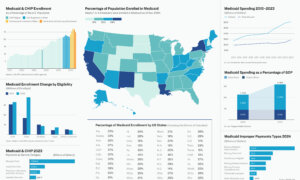Young Americans are dying at unprecedented rates, with a new study showing a surge in mortality driven by drug poisoning, alcohol-related deaths, and emerging health challenges.
Young adult deaths in 2023 were 70 percent higher than they would have been if pre-2011 trends had continued.
“One surprising thing about the increases in these causes of death are that these are causes of death that primarily kill people at much older ages,” study author Elizabeth Wrigley-Field, associate professor of sociology at the University of Minnesota and associate director at the Minnesota Population Center, told The Epoch Times.
Major Trends
The study, published in JAMA Network Open, examined more than 3.3 million deaths of U.S. adults ages 25 to 44 between 1999 and 2023. There were two distinct trends in rise in mortality, with a rise from 2011 to 2019, and a significant higher rise from 2020 to 2023.
Unnatural causes of death, such as drug poisoning, were the leading cause of death in young adults, constituting one-third of all deaths in 2023.
Drug poisoning has been the leading cause of death among young adults since 2014, with a sharp rise in 2020 and a stable excess death rate since. The researchers did not offer an explanation of why drug poisoning contributed to these deaths.
With the exception of COVID-19, most of the leading causes of death in young adults were not health-related.
Besides drug poisoning, the other top five causes of death in 2023 are deaths from natural causes (16 percent of excess deaths), transport-related deaths (slightly more than 14 percent), alcohol-related deaths (almost 9 percent), and homicide (slightly more than 8 percent).
Compared with pre-2011 trends, deaths from most causes were significantly higher than expected. This “excess mortality” was 35 percent higher in 2019, then spiked during the COVID-19 pandemic, nearly tripling by 2021, the authors stated.
While excess deaths decreased somewhat in 2023, they remained far above pre-COVID-19 pandemic levels. Overall, 2023 mortality for young adults was 70 percent higher than projected, representing 71,124 excess deaths.
The two distinct rises in mortality both before and after 2020 “may also suggest the need to attend to ongoing consequences of the COVID-19 pandemic—which may be expressed in causes of death related to long-term consequences of infection, medical disruption, and social dislocation—and to deleterious health trends that predated it,” the authors wrote.

(Courtesy of Wrigley-Field E et al, JAMA Network Open)
“The fact that we saw a real growth in mortality at these relatively young ages is very worrying because it suggests that many more deaths may come in the future as these cohorts age into midlife and beyond, if these trends aren’t reversed before then,” Wrigley-Field stated.
The increase in deaths attributed to drugs and alcohol is influenced by various factors, including psychosocial aspects such as pain and social isolation, as well as supply-side pressures such as the availability of fentanyl, according to Wrigley-Field, who stated that “the timing shortly after the Great Recession (2008) seems notable.”
In 2022, the proportion of deaths co-involving heroin and fentanyl precipitously increased to nearly 80 percent, according to the National Institute on Drug Abuse. Among those ages 25 to 34, the overdose death rate for men exceeds that for women by 146.8 percent, with opioids the deadliest drug type and at least one type of opioid being a factor in about 72 percent of overdose deaths.
‘Deaths of Despair’
Wrigley-Field noted that the “deaths of despair” framework is one important lens for understanding why mortality rates began to increase in about 2010, “although it’s not the only one,” she said.
Deaths of despair refers to a concept in public health describing a rise in mortality rates among certain populations, attributed to causes such as suicide, drug overdoses, and alcohol-related liver disease, which are seen as stemming from feelings of hopelessness and despair often linked to economic hardship, social isolation, and a perceived lack of opportunity.
Wrigley-Field pointed out that the people ages 25 to 44 today were born from 1981 onward, and those at the high end of this age range may have entered the labor market shortly after the Great Recession, from late 2007 until 2009, while people on the young end may have experienced the COVID-19 pandemic at a sensitive moment as they began adulthood.
“As a group, they have experienced expensive housing markets and a work context in which work hours have grown in many occupations, both of which can make it more difficult to lead healthy lifestyles,” Wrigley-Field said. People may find themselves trapped in a cycle of working long hours to afford expensive housing, leaving them with little time, money, or energy to prioritize their health. This could lead to a variety of health issues, both physical and mental.
Beyond Drug-Related Deaths
Although the largest portion of excess deaths in 2023 was driven by drug poisoning, “many other external and natural causes exceeded what prior trends would have projected,” the researchers wrote. This category includes “a lot of things,” including deaths from unknown causes, according to Wrigley-Field.
The combined contribution of cardiometabolic conditions, including issues related to circulation, endocrine function, and nutrition, was “substantial,” according to the authors.
“The cardiometabolic causes of death stand out because these are really a bellwether of population health,” Wrigley-Field said. “These causes tend to be very responsive to the fundamentals of healthy living: healthy food, exercise, sleep, limited exposure to tobacco and air pollution, and limited experience of excessive stress.”
Another major component of this category is kidney-related deaths, which stand out as a big source of deaths in this category for this age group, Wrigley-Field said. “Deaths associated with pregnancy and childbirth also fall into this category, as do a variety of less common causes of death.”
To reduce excess deaths in young adults, the researchers noted a need to address root causes such as opioid use, alcohol abuse, traffic safety, and poor diet. Because the increase in deaths happened in two phases (before and after 2020), solutions must consider both the long-term effects of the COVID-19 pandemic (such as lingering health issues, disrupted health care, and social problems) and the harmful health trends that already existed.
This study has some limitations. The 2023 data is preliminary, and the research looked at overall trends only, not specific groups such as those based on race, ethnicity, or gender, according to Wrigley-Field and her team.
She emphasized that while the study doesn’t explain why these death rates are rising (something that the researchers plan to investigate later), the fact that so many different causes are involved “suggests that we should be paying attention to big, systemic factors.”















